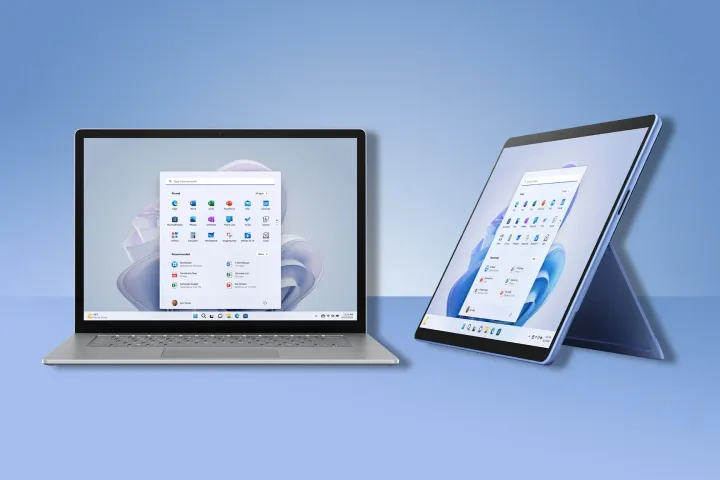Microsoft 365 Co-pilot Adopts GPT-5

Yet Another Leap in AI-Powered Productivity By Microsoft
Microsoft has officially rolled out GPT-5, Open Ai's most advanced language model to date, across its Microsoft 365 Co-pilot ecosystem. This marks a transformative moment in workplace AI, bringing unprecedented reasoning, responsiveness, and contextual awareness to everyday tasks.
What’s New with GPT-5 in Microsoft 365 Co-pilot?
- Quick Mode: For routine queries, Co-pilot uses GPT-5’s high-throughput model to deliver fast, fluent responses.
- Reasoning Mode: For complex tasks, Co-pilot switches to GPT-5’s deeper reasoning engine, crafting thoughtful, context-rich answers by analysing documents, emails, meetings, and chats 1.
This dynamic routing mimics human cognition—choosing the right “brain” for the job. Whether you're summarising RFPs or evaluating strategic options, Co-pilot adapts its approach to suit the complexity of your request.
What Is Quick Mode in Microsoft 365 Co-pilot?
Quick Mode is one of two intelligent response strategies introduced with GPT-5 in Microsoft 365 Co-pilot. It’s designed to handle routine, straightforward tasks with speed and fluency, making it ideal for day-to-day productivity.
How Does Quick Mode for Microsoft 365 Work ?
When you enter a prompt, Co-pilot uses GPT-5’s real-time router to assess the complexity of your request. If the task is simple—like summarising a document, retrieving a list, or answering a factual question—Co-pilot activates Quick Mode.
In this mode, GPT-5 uses its high-throughput model, which is optimised for:
- Speed: Responses are generated rapidly, often in near real-time.
- Efficiency: It avoids overthinking, focusing on delivering crisp, actionable answers.
- Low latency: Ideal for users who need fast turnarounds without sacrificing quality.
This mirrors how humans often respond instinctively to familiar or low-stakes questions—quickly and confidently.
Quick Mode User Case Example
Drafting Emails in Outlook
Prompt:
“Draft a response to this email thread with a professional tone that conveys the following points…”
Quick Mode Response:
Co-pilot instantly generates a polished reply using the context of the email thread, saving time and ensuring tone consistency
What Is Reasoning Mode in Microsoft 365 Co-pilot?
Reasoning Mode is one of two intelligent response strategies introduced with GPT-5 in Microsoft 365 Co-pilot. While Quick Mode handles fast, routine tasks, Reasoning Mode is activated when Co-pilot detects that your prompt requires advanced cognitive processing.
It’s built to:
- Comprehend complex prompts
- Gather and interpret relevant context
- Craft structured, multi-step responses
- Check its work before delivering results
This mirrors how humans approach difficult problems—taking time to understand, plan, and respond with care.
How Does Reasoning Mode for Co-pilot Work ?
When you submit a prompt, Co-pilot uses GPT-5’s real-time router to assess its complexity. If the task involves evaluation, comparison, strategic planning, or synthesis of multiple data sources, Co-pilot switches to Reasoning Mode.
In this mode, GPT-5:
- Pulls context from your documents, emails, meetings, and chats
- Applies proprietary business logic and historical patterns
- Constructs a plan of action
- Delivers a reasoned, auditable response that aligns with your goals
Reasoning Mode User Case Example
Legal Risk Assessment (Compliance Officer)
Prompt:
“Evaluate the legal risks of adopting the new data-sharing policy in Australia.”
Co-pilot in Reasoning Mode:
- Pulls the draft policy document.
- Cross-references it with internal legal memos and regulatory updates.
- Highlights clauses that may conflict with local data protection laws.
- Suggests revisions and flags areas needing legal review.
Outcome:
A comprehensive risk profile tailored to regional compliance requirements.
Table 1. Quick Mode Verses Reasoning Mode
| Feature | Quick Mode | Reasoning Mode |
|---|---|---|
| Purpose | Fast answers to simple prompts | Deep analysis for complex tasks |
| Model Used | High-throughput GPT-5 | Deep reasoning GPT-5 |
| Speed | Very fast | Slower, more deliberate |
| Use Cases | Summaries, lists, factual queries | Evaluations, comparisons, strategic plans |
| Data Handling | Light contextual awareness | Full context from emails, docs, meetings |
Co-pilot + Chat GPT-5 = Smarter Context Awareness
Co-pilot now leverages GPT-5 to:
- Understand nuanced prompts and business-specific terminology.
- Pull relevant data from across your Microsoft 365 environment.
- Apply proprietary context to deliver tailored recommendations.
For example, a marketer can ask Co-pilot to compare agency proposals. Co-pilot will not only summarise the documents but also rank them based on criteria drawn from internal communications and historical decisions.
Co-pilot with GPT 5 Provides Enterprise-Grade Security and Compliance
Microsoft ensures that GPT-5’s integration maintains the security, privacy, and compliance standards expected by enterprise users. Co-pilot's reasoning is confined to authorised data, and its outputs are traceable and auditable—critical for regulated industries
Ecosystem-Wide Integration with Copilot and GPT-5
GPT-5 isn’t limited to Microsoft 365. It’s now embedded across:
- GitHub Co-pilot for developers.
- Co-pilot Studio for building custom AI workflows.
- Azure AI Foundry for enterprise-grade AI deployments.
This unified rollout means consistent intelligence across coding, collaboration, and cloud operations.
To discover more about how the new GTP-5 power Co-pilot can assist your business today, contact us at PCP



